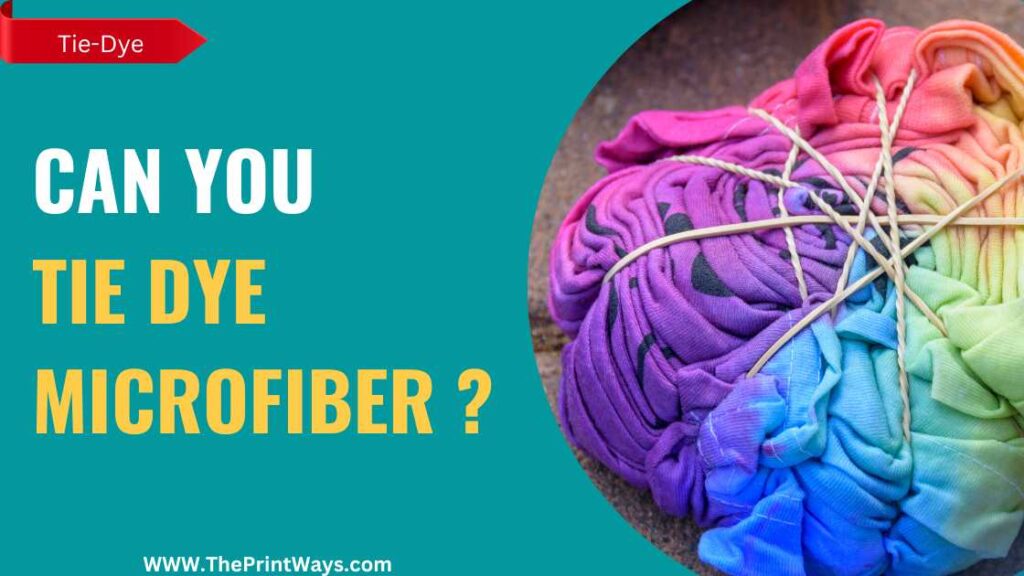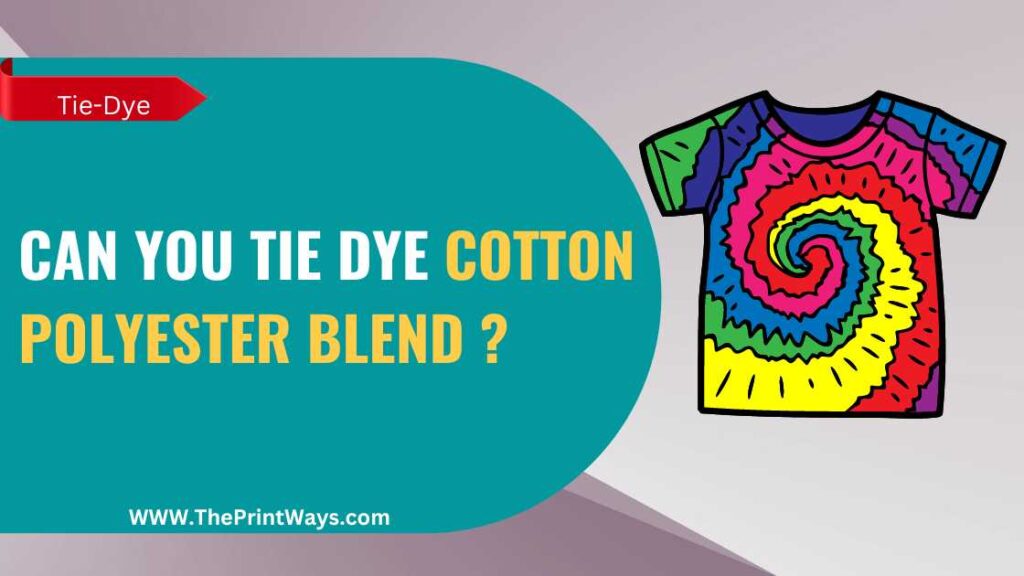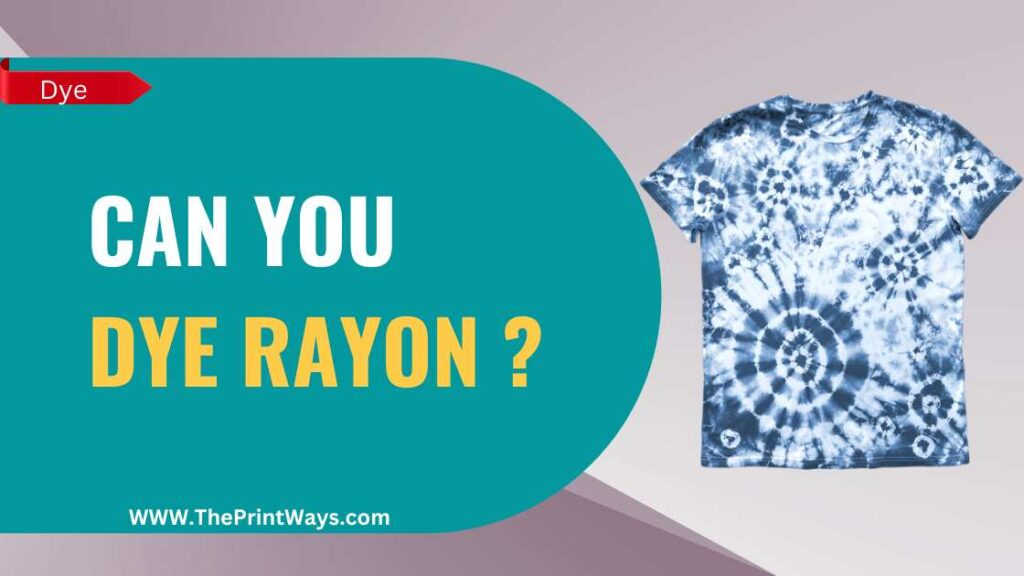Have you ever wanted to tie dye your clothes, but were unsure if it was possible? For many people, their clothing is made of polyester and they don’t know whether tie-dyeing will work on this fabric. Well, the answer is yes, you can tie dye polyester! We will explore how to create beautiful and unique designs with a few simple steps.
Can you tie dye Polyester?
Yes, you can tie dye polyester, but it takes special care and attention to get colours that are vibrant and last a long time. Polyester is a synthetic fabric that is known for being strong, not wrinkling, and wicking away moisture. It is also known for being hard to dye because it is hydrophobic, which means it repels water and can be resistant to dye absorption.
To tie dye polyester successfully, it is important to choose the right dye, prepare the fabric properly, and follow the right dyeing process. It’s best to use a dye made especially for synthetic fibres like polyester or nylon. These dyes contain special chemicals that help the dye get into the polyester fibres and stick to them permanently.
Understanding the Properties Of Polyester Fabric
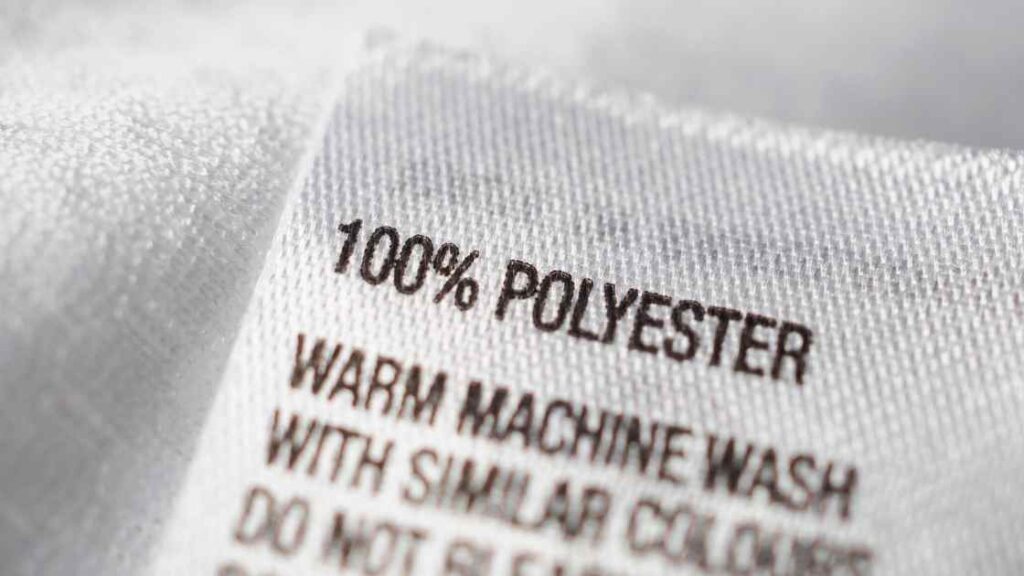
Polyester is a versatile fabric that has many properties. It’s made of polyester fibers, which are strong and resistant to wrinkles and stretching. Polyester also resists shrinking and fading better than other fabrics such as cotton or wool.
Its structure is composed of tightly packed threads that are woven together in a particular way. This type of construction makes it ideal for holding its shape when subjected to pressure or heat.
Different types of polyester fabrics have different characteristics based on the thread count, weave pattern, weight, and finish used during production.
Also Read: How to remove Screen printing from Polyester?
For example, heavier weights create more durable garments while lighter weights can be easier to launder. The tighter the weave pattern is, the more wrinkle-resistant it will be. Depending on what kind of dye is used, certain finishes may give the fabric a glossy look or make it waterproof.
Due to its unique properties, polyester isn’t always easy to dye evenly with traditional methods like tie-dyeing; however some specialized dyes do exist which provide excellent results when applied properly.
Choosing The Right Dye For Polyester Fabric
Polyester is a versatile fabric, so it can be dyed any number of ways. You can Tie dye polyester and be able to create vibrant colors and patterns that are eye-catching and fun. But, it’s important to choose the right dye for the job.
When choosing dye for your project involving polyester fabric, synthetic dyes work best because they won’t fade or wash away easily over time. You should also consider what kind of look you want in your finished product: some dyes produce brighter, more saturated colors while others create softer hues.
Related: Can You tie dye Microfiber Fabrics?
Additionally, depending on how much fabric you need to dye, there may be different types of packaging available with pre-measured amounts of dye powder or liquid concentrates which make it easier to use the exact amount needed for each project.
Preparing Polyester Fabric For Tie-Dyeing
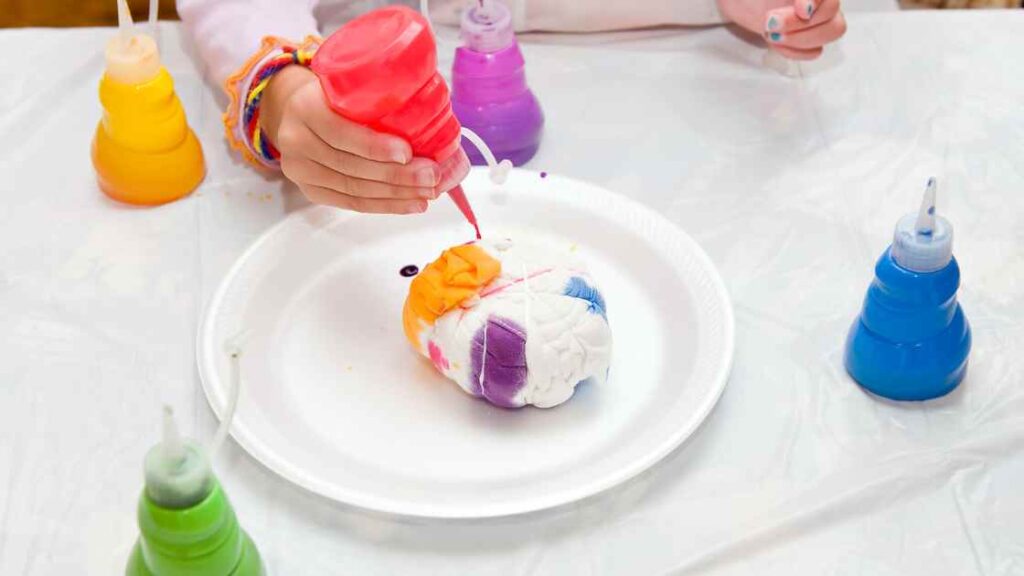
Preparing polyester fabric for tie-dyeing is an essential step in the process. Before you tie dye polyester, it needs to be prepped as it has a tendency to resist color absorption.
This preparatory stage involves treating the fabric with salt and soda ash, which helps create an alkaline environment that allows for more efficient uptake of dye colors.
- To do this, dissolve 1 cup of table salt into 4 liters of water in a large bucket or container. Then add 1/4 cup of soda ash and stir until fully dissolved.
- Submerge your polyester garment into the mixture, making sure all areas are covered by the solution.
- Allow it to soak for at least 30 minutes prior to rinsing thoroughly with cool water and allowing it to air dry completely before beginning the tie-dye process.
It’s important when prepping any type of fabric for tie-dyeing to take great care not to damage or stretch out clothing items during the soaking or wringing stages.
Doing so can lead to uneven coloring on surfaces once the dying process begins – something you’ll want to avoid!
How to Tie Dye Polyester Fabric?
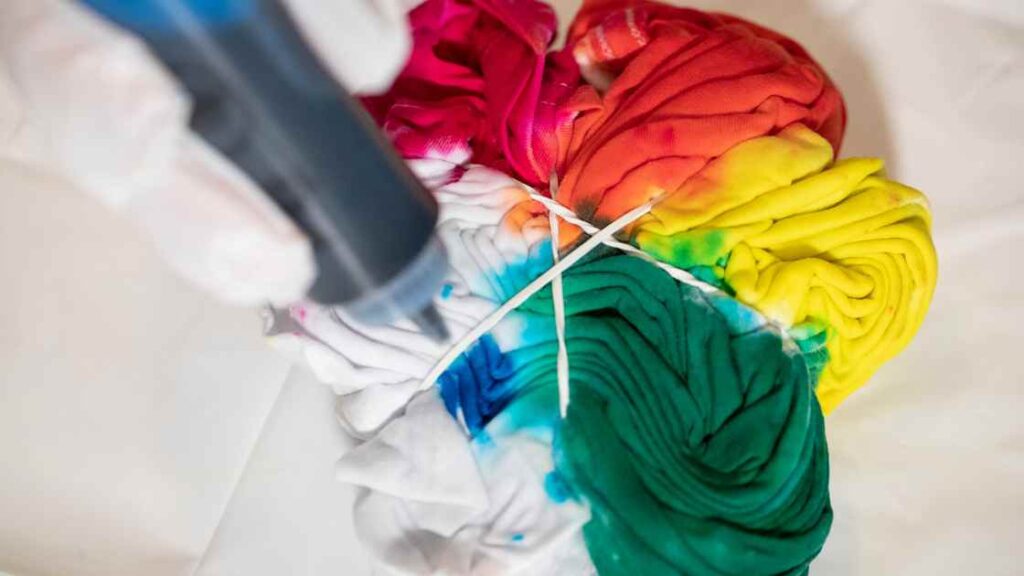
Tie-dyeing is a fun and creative way to add color and design to plain polyester fabric. Here’s a step-by-step guide on how to tie dye polyester:
Materials needed:
- Polyester fabric
- Fabric dye
- Rubber bands
- Gloves
- Plastic bucket or bowl
- Plastic wrap
- Water
Instructions:
- Choose your polyester fabric. Keep in mind that polyester is a synthetic fiber and may not take dye as well as natural fibers such as cotton.
- Wash your fabric to remove any sizing or finishes that may be on it.
- Prepare your dye according to the manufacturer’s instructions. Make sure to wear gloves to avoid staining your skin.
- Fold or twist your fabric into the desired pattern. Secure the fabric with rubber bands. The areas that are tied or banded will resist the dye and create a pattern.
- Place your fabric in a plastic bucket or bowl. Pour the prepared dye over the fabric, making sure to saturate it completely. Use a spoon or stirring stick to move the fabric around and ensure that the dye penetrates all areas.
- Cover the fabric with plastic wrap and let it sit for the recommended amount of time, according to the dye instructions. This will allow the dye to set.
- After the recommended time has passed, rinse the fabric under cold running water until the water runs clear. This will remove any excess dye and help set the color.
- Remove the rubber bands and unfold the fabric. Wash it in cold water with a mild detergent, and rinse thoroughly.
- Hang or lay the fabric flat to dry.
You May Like: How to print on Leather? Ultimate Guide (2023)
Tips For Achieving Vibrant Tie-Dye Colors On Polyester
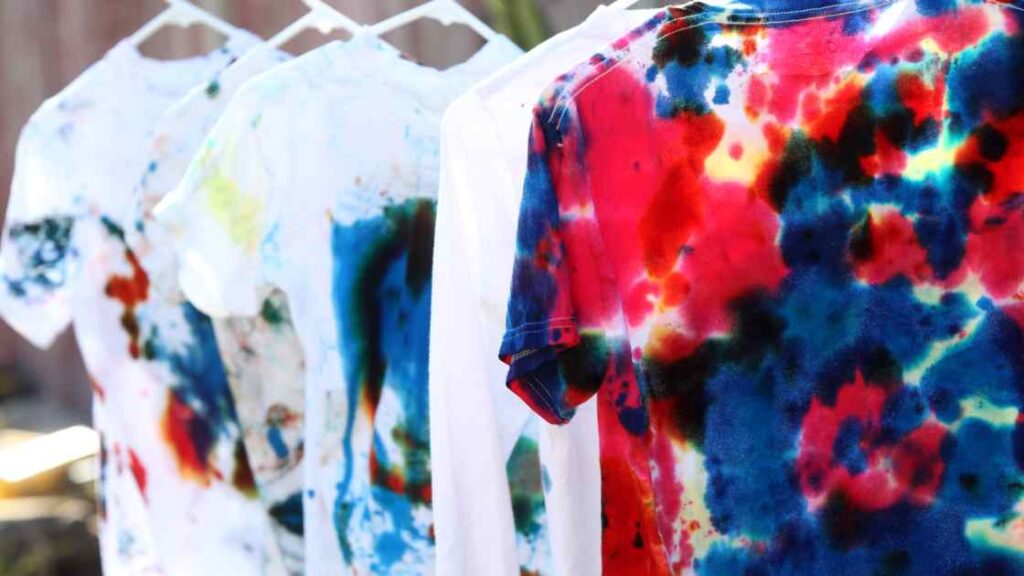
Tie dyeing polyester fabric can yield some vibrant colors.To achieve this, it’s important to select specialized dyes that are formulated specifically for synthetic fabrics such as polyester.
- Products labeled “All Purpose Dye” or similar will not work and may even damage the fabric.
- It is recommended to use a water temperature of 140°F (60°C) when tie-dyeing polyester, but be sure to check your dye’s care instructions before washing or bleaching your dyed pieces.
- Once you have chosen an appropriate dye, follow the manufacturer’s instructions carefully when preparing and applying the dye.
- After completing the tie-dye process, let the items air dry thoroughly before laundering them in cold water with mild detergent.
Also Read: 4 Best Methods for printing on Black paper.
Caring For Tie-Dyed Polyester Fabric
The key to successful tie-dyeing and maintaining vibrant colors on polyester fabric is following proper care instructions after the dyeing process.
When caring for your newly dyed polyester fabric, it is best to launder in cold water with a mild detergent and avoid using bleach or harsh chemicals.
Additionally, drying by air or low heat setting may help preserve the color of your design. With these simple steps and regular maintenance, you should have no problem keeping your tie-dyed polyester looking vibrant for years to come!
Frequently Asked Questions
Q: Can you tie dye polyester without bleach?
Yes, you can tie dye polyester without bleach. Bleach is not necessary for tie-dyeing polyester, as the dye is designed to penetrate the fabric without the need for pre-treatment.
Q: Can polyester be tie dyed?
Yes, polyester can be tie-dyed. However, it is important to note that polyester is a synthetic fiber and may not take dye as well as natural fibers such as cotton. To ensure the best results, use a dye that is specifically formulated for use on synthetic fibers.
Q: Can I tie dye polyester at home?
Yes, you can tie dye polyester at home. It is a fun and creative way to add color and design to plain polyester fabric. You will need fabric dye, rubber bands, gloves, a plastic bucket or bowl, plastic wrap, and water to complete the process. Follow the dye instructions carefully, and experiment with different folding and tying techniques to create unique patterns and designs.
Q: How long does tie-dye last on polyester?
The lifespan of tie-dye on polyester depends on a variety of factors, such as the quality of the dye and how well it bonded with the fabric, as well as how often the fabric is washed and exposed to sunlight. In general, tie-dye on polyester should last for several washes and remain vibrant for a long time.
Conclusion
In conclusion, tie dyeing polyester fabric is a fun and creative activity. However, it’s important to take the necessary safety precautions when dyeing with multiple colors. It’s also essential to store the dyed fabric properly in order to prevent fading or bleeding of the colors over time.


